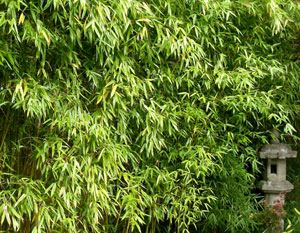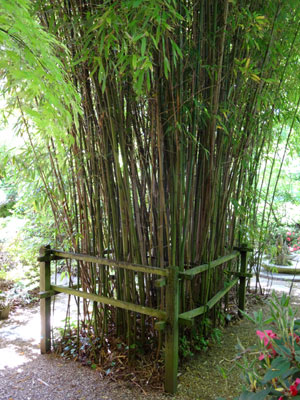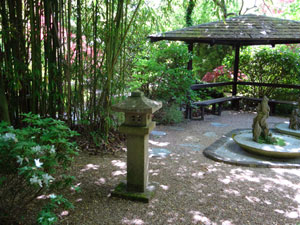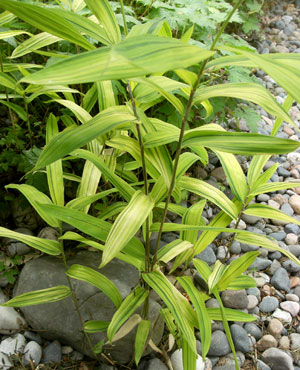Growing Bamboo in the Garden
Japanese Garden Design

Grace and elegance are instantly provided by a clump or two of bamboo, and if the canes are reasonably tall, then they can also provide you with some privacy when planted against a fence, without blocking light in the way that a dense conifer hedge would.
Growth Habits
There are countless different varieties of bamboo, ranging from tropical giants to miniature dwarfs. Whatever species and variety of bamboo you choose to plant in your garden, you should consider its growth habit and if possible, opt for a naturally non-invasive clump-forming variety, rather than a vigorous plant that will soon start to send out runners many metres away and often into your neighbour's garden.
Spend your time researching the different varieties that may be suitable for your garden, including the colour of the canes and leaves, and most importantly, the plant's ultimate size (both height and width). Don't always rely on the plant labels at the garden centre, as these can be a little generic and often misleading. Instead, it is best to refer to horticultural and gardening books, as well as specialist bamboo websites and knowledgeable nursery men.

Containing Bamboo Roots and Runners
If you are lucky enough to have the space to grow tall bamboo with a spreading habit, then it is essential that you first take some precautions to avoid ongoing problems in the near future. Invest in a purpose-made, heavy duty root barrier, which will be able to control even the strongest rhizome growth beneath the soil. Alternatively, you can bury a very large plastic pot in the soil and simply plant your bamboo in this to contain its roots, while if you are able to be vigilant when the spring shoots emerge, simply snap off those that have spread too far and control the clump in that way.
Bamboo grows particularly well in pots, although it does require regular watering and feeding to keep it healthy. Repotting every year or two is also necessary if you want your leaves to remain green and attractive, as bamboo will quickly become extremely pot bound. With this in mind, it is sensible to choose pots that do not curve inwards, so that the plant will be easier to remove from the pot in the spring.

Growing in Pots
If you wish to keep your bamboo in the same pot, rather than potting it on into a larger pot, then remove the plant in the late winter / early spring and saw the bottom one-third of the roots off.
Fill the bottom of the pot with some fresh compost and slow-release fertiliser, and then replace the bamboo. This will reinvigorate the plant and promote strong growth, with new shoots following soon after when the warmer weather arrives.

Varieties
Popular varieties of bamboo include:
- Chusquea Culeou (foxtail)
- Chusquea Gigantea
- Fargesia Dracocephela
- Fargesia Nitida
- Fargesia Robusta
- Fargesia Scabrida 'Asian Wonder'
- Hibanobambusa Tranquillans 'Shiroshima' (white variegation)
- Phyllostachys Aurea (yellow canes)
- Phyllostachys Aureosulcata Spectabilis
- Phyllostachys Nigra (black canes)
- Pleioblastus Distichus (fernleaf)
- Pleioblastus Pygmaeus (dwarf pygmy bamboo)
- Pleioblastus Variegatus (yellow variegation)
- Pseudosasa Japonica (large leaves)
- Sasa Palmata (large palm-like leaves)
- Semiarundinaria Fastuosa
 Grace and elegance are instantly provided by a clump or two of bamboo, and if the canes are reasonably tall, then they can also provide you with some privacy when planted against a fence, without blocking light in the way that a dense conifer hedge would.
Grace and elegance are instantly provided by a clump or two of bamboo, and if the canes are reasonably tall, then they can also provide you with some privacy when planted against a fence, without blocking light in the way that a dense conifer hedge would.

